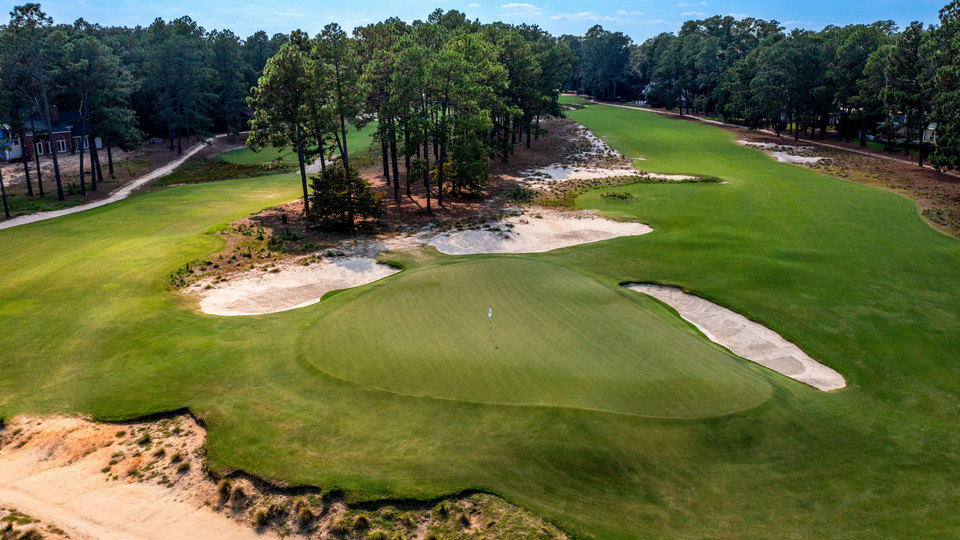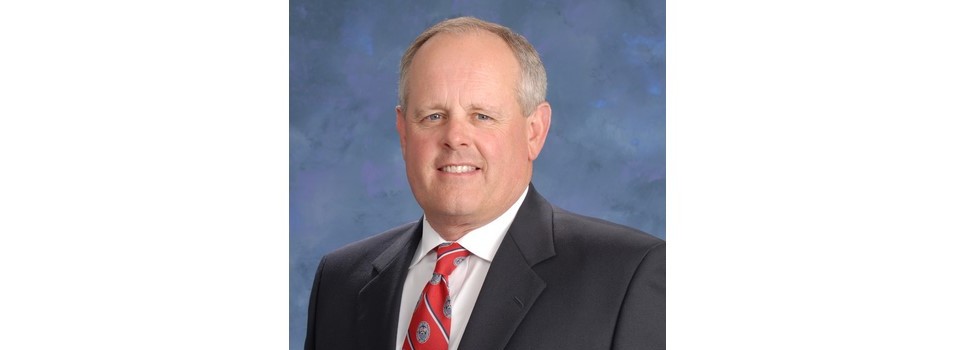Pinehurst No.2 – Pt.1
Does the traditional June time frame – Father’s Day weekend in the USA — bring to bear the most optimal turf conditions for the architecture presented at Pinehurst No.2?
Agustín Pizá: In this day and age, we have the technology and the means to manipulate almost anything when it comes to conditions on a golf course. This will be the first US Open ever played on ultra dwarf Bermuda grass putting greens, a warm-season grass that thrives in the heat and humidity of the area. I usually design for these grasses and expect this to be a great surface of golf for the “exaggerated” turtle back greens.
Stephen Kay: Yes, June is a good time for the turfgrass. Much better than if it was in May for the PGA.
Bill Bergin: Because the growth of warm season rough is not a factor at Pinehurst, the date works very well for a fast and firm presentation of the course.
John Fought: Obviously the weather during the spring will affect the turf conditions. I think the bermudagrass is better later in the summer but I still think the June date is good for tournament golf.
Richard Mandell: Everything on No. 2 is warm-season grass so in that respect, the conditions will be firm and fast, which is how the course is presented, particularly the greens. Not having to irrigate cool-season bents just to keep them alive is not an issue anymore – which can come with overwatering.
This year, we haven’t had the hot weather we usually do by this moment on the calendar but it is enough to get the Bermuda going. Usually that isn’t a problem.
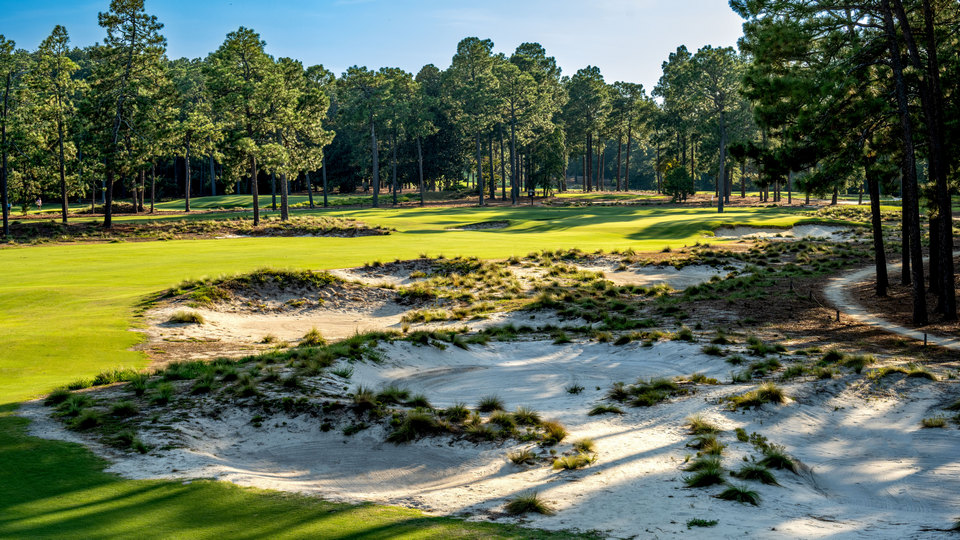
On a scale of 1-10 with 1 as failure and 10 representing total success – what number would you give to the USGA in the manner by which host sites for the US Open are selected and then prepared for the competition?
Richard Mandell: I would give them a 7 for lack of variety if they indeed limit the host sites to evolve into a rota-style system. I enjoyed that the USGA chose some non-traditional sites like Erin Hills and Chambers Bay but it seems like there is a contraction back to the tried-and-true blue-bloods, mostly so they can consistently set things up as a test to identify the best player according to whatever the USGA’s criteria may be.
For the USGA, the number is higher than seven as the US Open is its own championship and they can do what they want with it. But as a golf architecture fan, I want variety. Ironically, Pinehurst No.2 provides that variation from the traditional venues. I give that choice a 9.
John Fought: The USGA works very hard to play courses in a difficult but fair situation. I think it is great to have one tournament that stretches the players’ abilities to play precise shots while forcing them to think carefully before they play.
I would give the USGA a 7 on how they select sites and prepare them for their championships.
Agustín Pizá: Even though I would like to see more variety, the time of year doesn’t really allow for other sites to be considered. Maybe this will change after testing Bermuda grass this year. I personally love the way the USGA tests the elite players of the world. Host cities: 7. Preparation: 9.
Bill Bergin: The US Open is always a highly anticipated week for me as a golf fan and architect.
I look forward to witnessing the high level of mental and physical challenge that the players will face. I would give the USGA a 9.
Stephen Kay: I would give them an 8. I do not give 10s. I do think they protect par too much, especially with such narrow fairways. Narrow fairways take away risk and reward – wider fairways create more options.
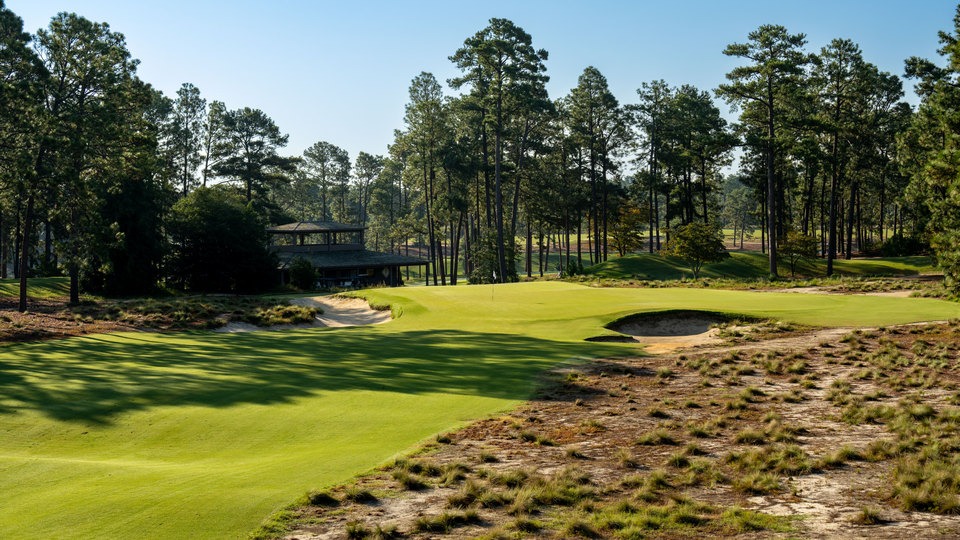
Pinehurst No.2 epitomizes the “how it plays” philosophy and can be difficult to discern through a single visit. Has golf architecture today become too centered on how a “course looks” and thereby including a range of features that are more visual than actually strategic?
John Fought: Aesthetics can be done while also accomplishing interesting strategic value. For me, I want both when designing a new golf course. I feel stronger about the strategic elements as I love the challenge.
Bill Bergin: No doubt. Nuance is a lost art in the presentation of golf course design. Golfers can be a visual group and a course like Pinehurst is much more relationship oriented, requiring thought and study to grasp its intricacies.
Agustín Pizá: I personally like to balance proportion, rhythm, balance with aesthetics and strategy. Sometimes you can design with functionality in mind but sometimes with aesthetics in mind.
The variety of these factors will offer the perfect golf experience. Let’s not forget this is a “player’s” golf course in a resort environment.
Stephen Kay: Absolutely yes – how a golf course looks is important but how it plays is more important. Golf needs to be fun to play, not too difficult and we must design and maintain for a faster round of golf. I am very in favor of short rough so the golfer can find his ball quickly.
Richard Mandell: Absolutely and we are in the midst of yet another aesthetics-led movement couched in “minimalism.” The aesthetics of where we are these past five years has once again moved toward penalty whereas it wasn’t the case even a decade ago. We are now in a game of who can visually top who in the design world – to the point where we even have “inspired” restoration work – in which architects are moving away from restoration and toward packaging their own ideas as inspired from the original architects.
That’s a dangerous precedent that tells me that today’s architects seem to think they know better than the originals they claim to follow. Unfortunately, there is, once again, just no room for subtlety and even true strategy that doesn’t skew toward penal.
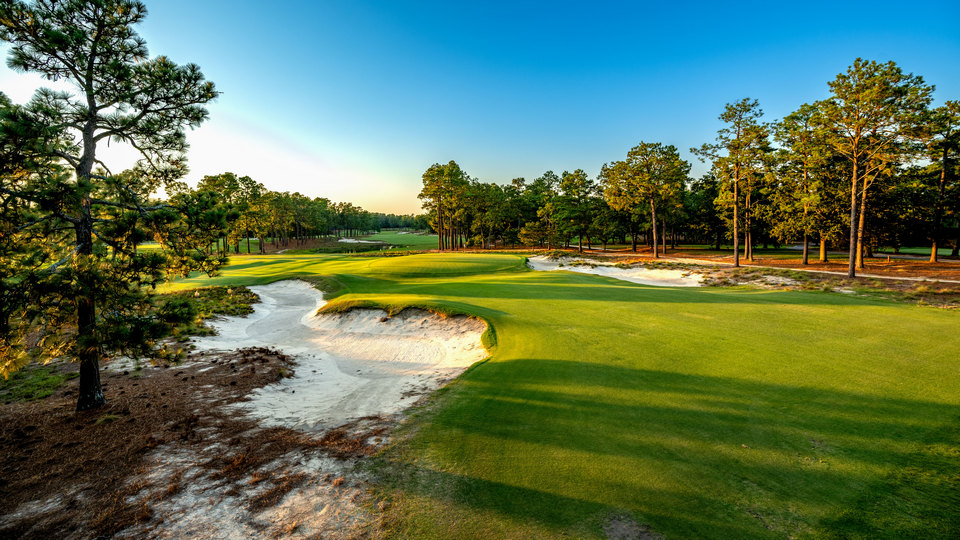
If you had to name one course in the USA that has never hosted the US Open and should, which one would you name and why?
Richard Mandell: Pine Valley plays almost 7,200 yards from the tips so why not? Unfortunately, Cypress Point is too short. So is Crystal Downs. You may be able to stretch Prairie Dunes to 7,200 but I’m not sure that distance is long enough anywhere for a men’s US Open. Why? They’re all golden age classics.
Stephen Kay: I am going to name two – one private and one public. For private I would say National Golf Links of America – I know some say it is not challenging enough for the elite player, if true so what. It is such an architectural gem it would be great to be showcased on TV.
As for public I would say Pasatiempo by Alister Mackenzie or at Bandon Dunes with ‘Sheep Ranch by Coore & Crenshaw.
John Fought: I never do this but I would say that Windsong Farm (South) could be a great US Open course. It has all the shots of the great courses but is too new to receive consideration.
It’s a course designed by Tom Lehman and myself twenty years ago. It is a big course stretched out on a rolling landscape with tall grasses in the outer rough and large interesting greens complexes. The variety is stunning.
Bill Bergin: The National Golf Links of America on Long Island because it played such a big role in the development of golf in the United States.
My next choice would be a nod to Pete Dye, and pick one of his courses. Honors Course, Ocean Course.
Agustín Pizá: Cypress Point. With a finish on 17. No need to play 18. Alister Mackenzie’s masterpiece and back-to-back exceptional par 3s.
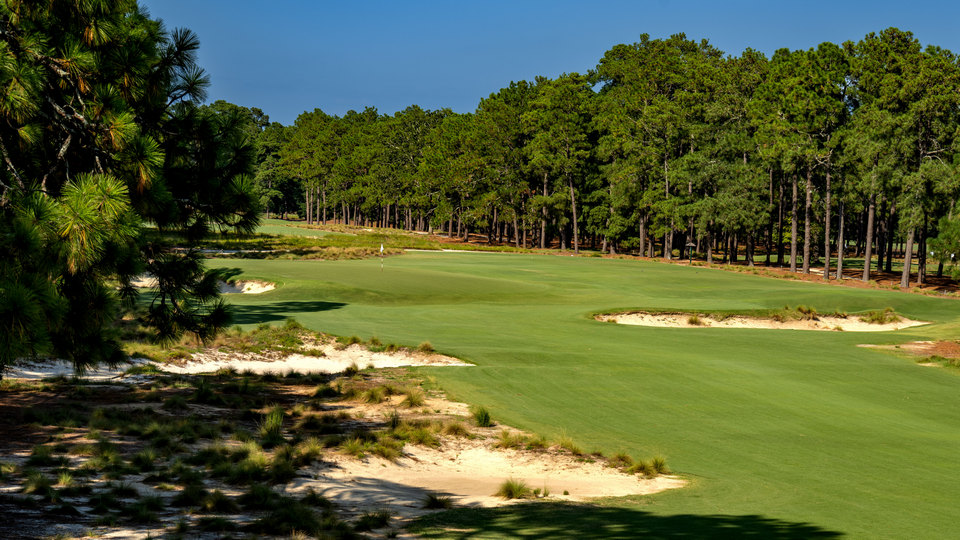
When assessing the four majors how would you rank them in order of importance / significance?
Richard Mandell: I would go US Open, Open Championship, Masters, and then the PGA Championship, unless it went back to match-play. Until then, there is very little to distinguish it from the US Open.
I would maybe nudge it ahead of the Masters if it did go to match play because it is the championship of the professionals of our business and I think that is more important than what the Masters represents. But I do love watching it every April. There is either something about returning to the same course every year or just returning to Augusta every year. It’s probably the latter.
Bill Bergin: Having played in multiple US Opens and Open Championships, I understand and appreciate those events. The Masters remains more of a mystery, and therefore intriguing.
My order would be T1 – Masters, Open Championship and US Open, with the PGA in the fourth position. Each of the majors listed as tied at the top have a distinct identity. The PGA is less defined.
Stephen Kay: Masters, US Open, British Open and PGA. I do think The Players at TPC Sawgrass is a legitimate 5th major and be designated as such.
Agustín Pizá: The Open when in St Andrews takes solo first. Tied with The Masters when it’s held elsewhere. Then the US Open followed by PGA Championship. I also believe The Players is in a fourth-place tie.
John Fought: It is almost impossible to rank because they are all different. The Masters is a historic event played on the same course every year. The US Open is generally the sternest test played on amazing courses. The Open Championship is wonderful with an amazing history. The PGA is the players tournament but has the least appeal to some. I love all of the four championships.
If I had to rank the majors, I would rank them as follows: US Open, The Open Championship, The Masters, PGA.
The Participants
Agustín Pizá
Piza Golf
San Diego, California, USA
Award-winning architect Agustín Pizá has earned a Bachelor of Architecture degree from ITESM and a Master’s Degree in Golf Course Architecture from the Edinburgh University in Scotland. He is a proud member of both the European Institute of Golf Course Architects (EIGCA) and the American Society of Golf Course Architects (ASGCA).
Pizá, recognized with many international accolades, has garnered a reputation for “Re-defining Golf Facilities” with his unique design concepts – Wellness Golf®, Multi-purpose Golf, and the Butterfly Effect. He is recognized by Forbes Magazine as one of the top one hundred inventive minds from Mexico and Golf Inc. Magazine featured him as one of the top-five visionaries in the golf industry.” He is also the Director of the First Tee in Mexico.
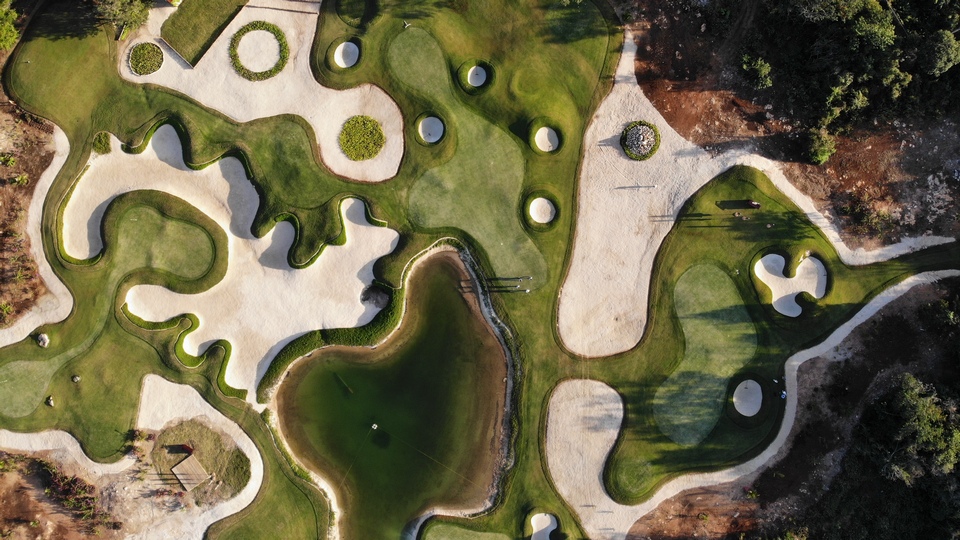
Bill Bergin
Bergin Golf Designs
Atlanta, Georgia, USA
Bergin Golf Designs is led by Bill Bergin, whose background in the golf industry is distinctive. Bergin played the world’s best golf courses as a touring professional and, over the last thirty years, has been involved in the planning and design of over 100 projects.
Since founding Bergin Golf Designs in 1994, Bergin has combined his strategic instincts and extensive design experience with the latest technology and a dedication to detail in project management. He and his team create outstanding courses enjoyed by golfers of all levels.
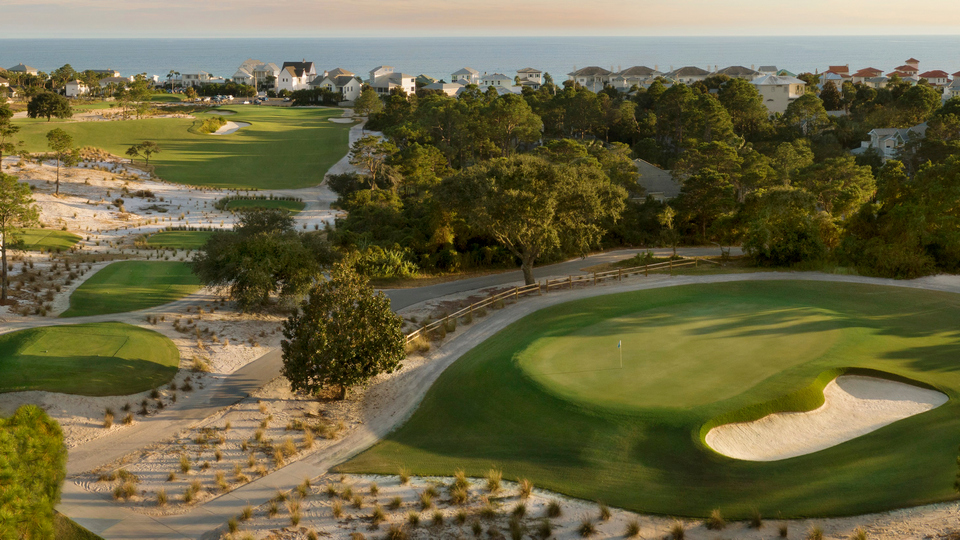
Stephen Kay
Golf Course Architect, LLC
Egg Harbor City, New Jersey, USA
The ASGCA member has been in practice for over 30 years and has done renovation work at more than 300 golf courses. He has designed 21 new courses while providing renovation services to over 250 courses specializing in: Donald Ross, A.W. Tillinghast and Charles Banks.
Has also taught for over 25 years design history and principles at Rutgers University’s turfgrass program. He also recently completed a major restoration of Charles Banks’ Francis Bryne and his newest design, Old Bridge Golf Club, a new 18-hole publicly-owned facility in central New Jersey.
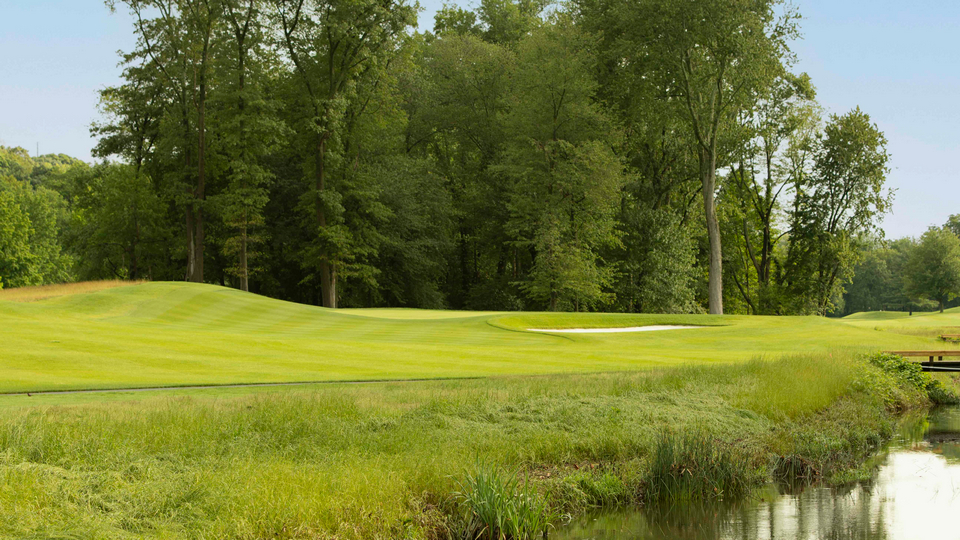
John Fought
John Fought Design
Scottsdale, Arizona, USA
Began as a professional golfer after winning the 1977 US Amateur. As a professional on the PGA TOUR, named “Rookie of the Year” in 1979 after winning back-to-back events. When injuries forced him to leave the tour in 1987 he began a career in the field of golf course architecture.
Has worked all over North America on various types of projects from conceptual planning to award winning courses. Fought’s courses have won numerous awards including, “Best New Course,” and “Best New Renovations.” by leading publications such as Golf Digest and Golfweek. His courses have also held more than 90 national championships since 1996.
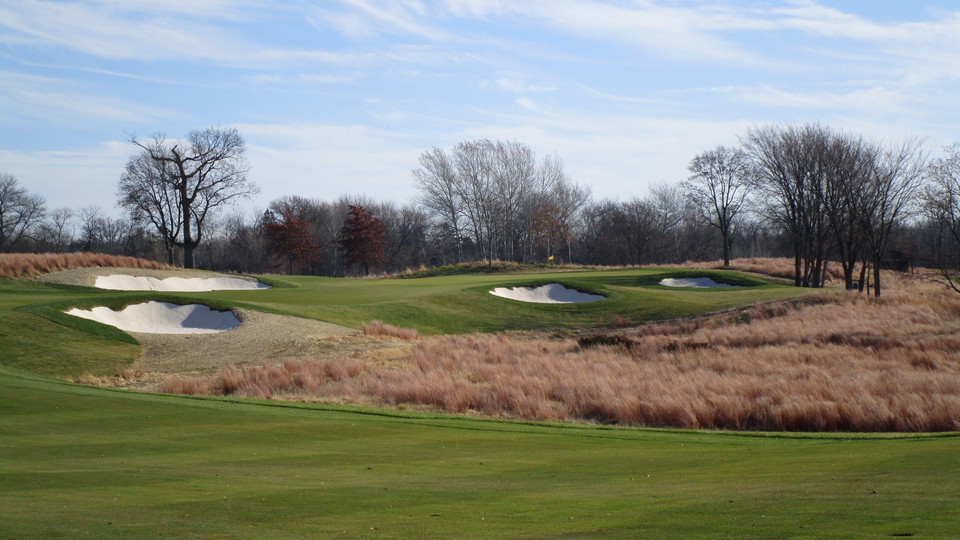
Richard Mandell
Richard Mandell Golf Architecture
Pinehurst, North Carolina, USA
With offices in Pinehurst, North Carolina and Chicago, Illinois, Richard Mandell Golf Architecture has designed, renovated, or restored more than seventy-five golf courses since 1992 in nineteen states and China and has won awards spanning four decades.
Mandell has restored a dozen Donald Ross courses as well as worked on layouts by A.W. Tillinghast, Stanley Thompson, Robert Trent Jones, and Tom Bendelow to name a few. He has also created original layouts such as Braemar Golf Course in Edina, Minnesota and the recently-opened Gillespie short course in Sarasota, Florida.
Author of Principles of Golf Architecture and The Legendary Evolution of Pinehurst.
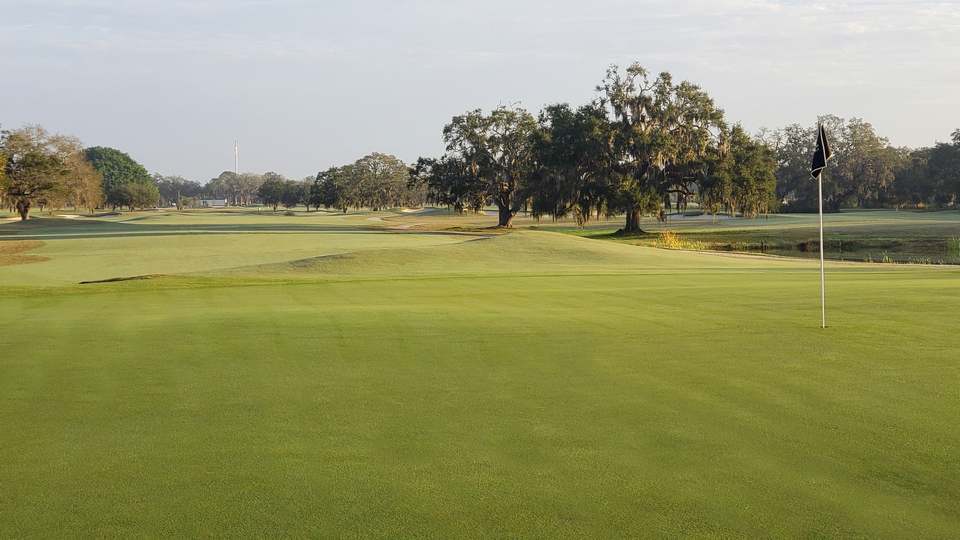
For the latest news in the golfing world, follow us on X (Formally Twitter).
